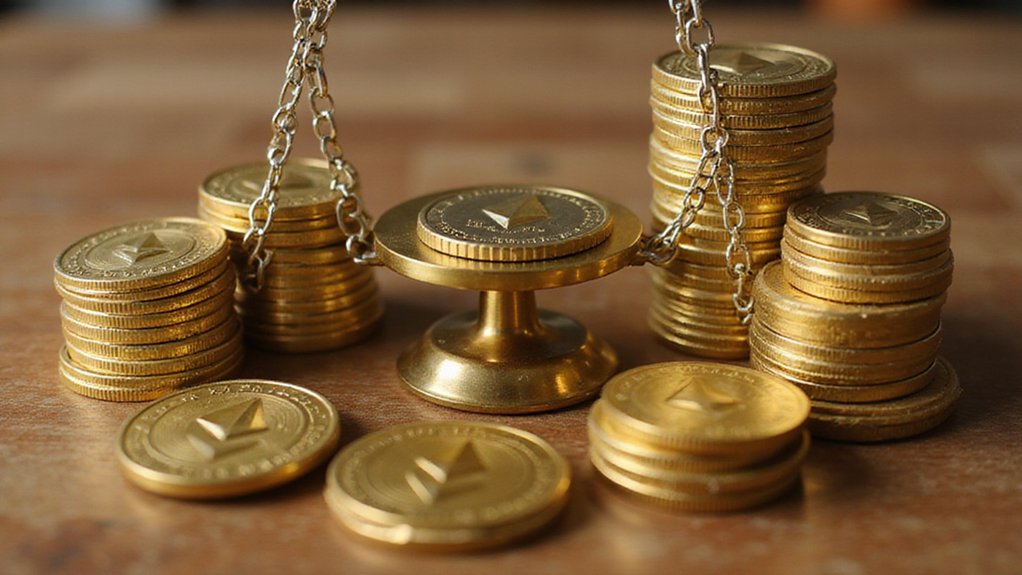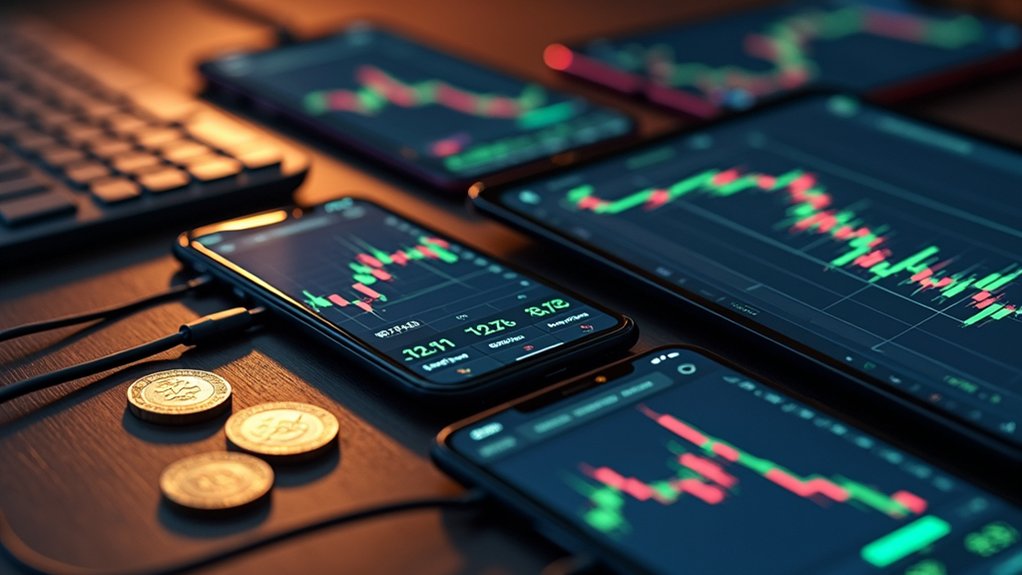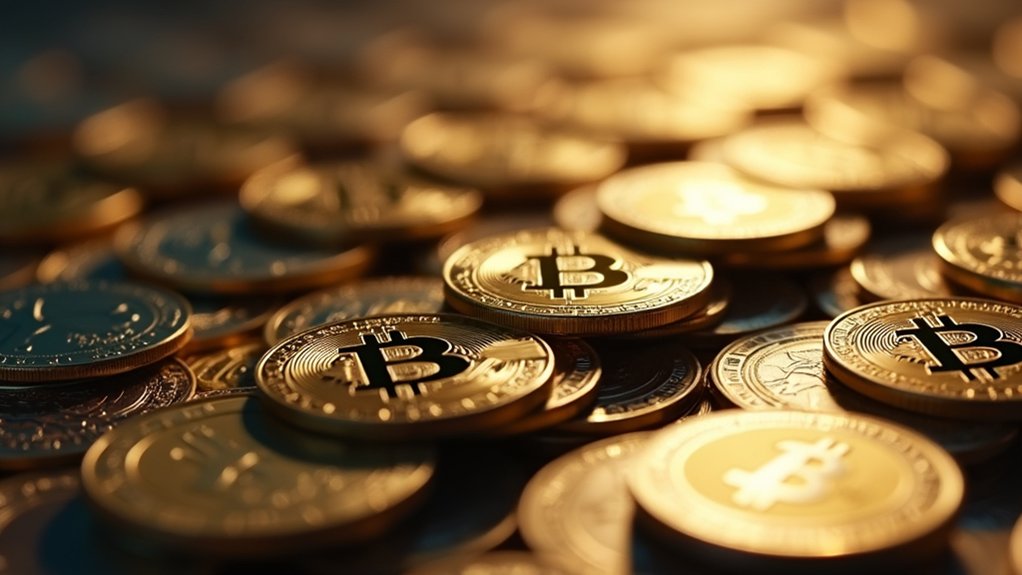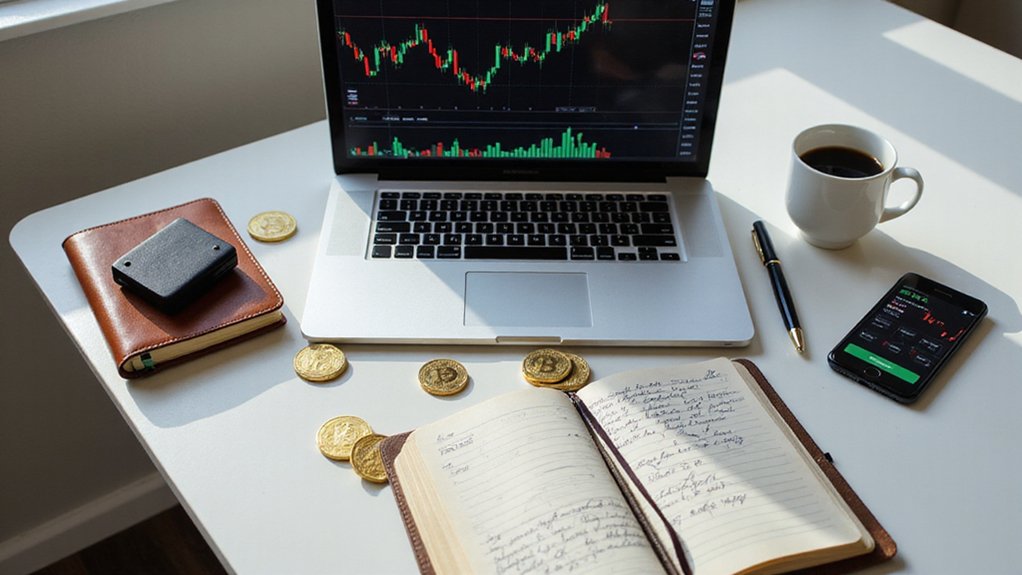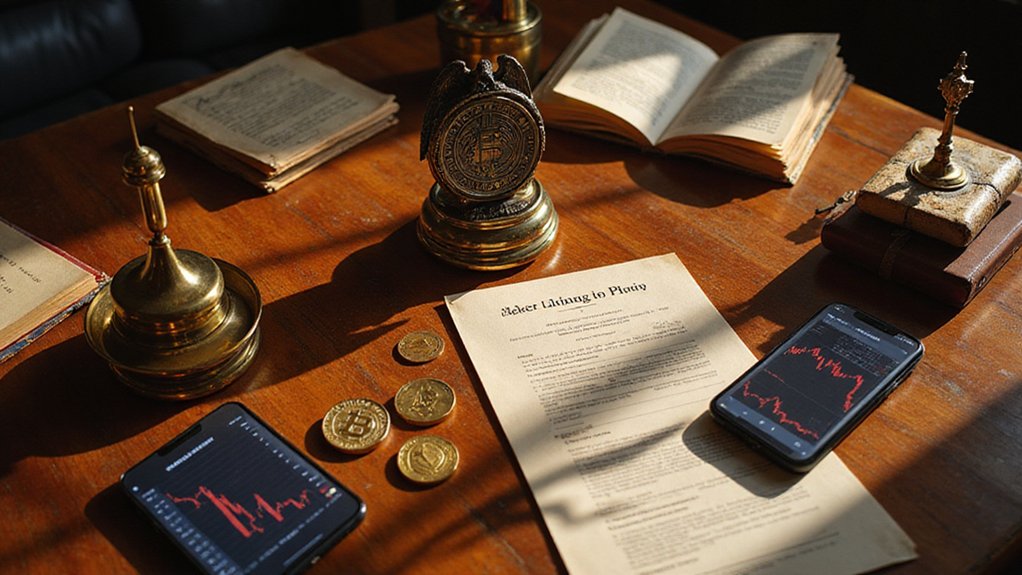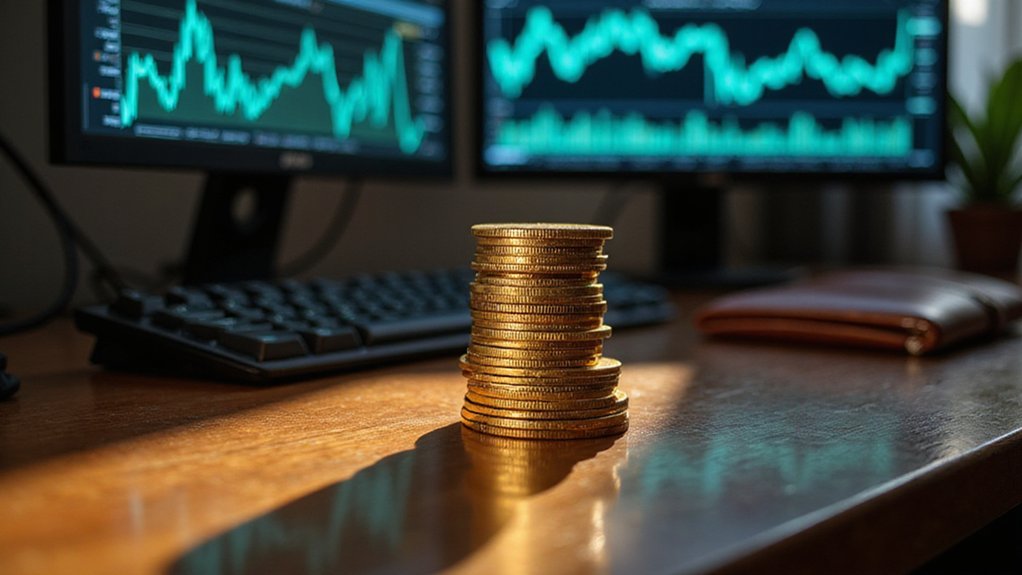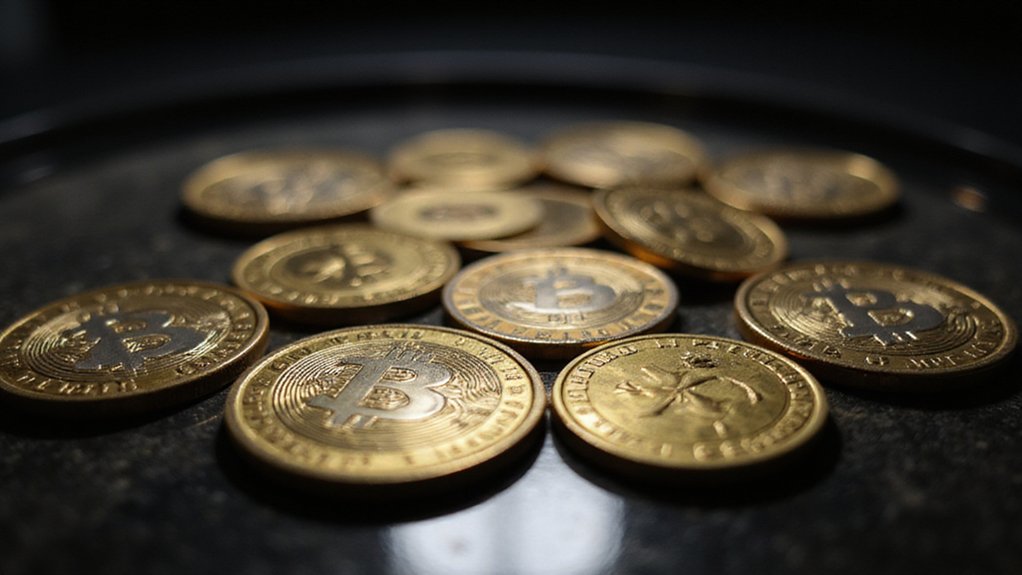DAI functions as a decentralized stablecoin that maintains its dollar peg through cryptocurrency collateral rather than traditional backing—an ironic feat of using volatile assets to create stability. Users lock Ethereum and other approved tokens into smart contracts at over-collateralization ratios exceeding 150%, creating collateralized debt positions that mint new DAI. MakerDAO governance, driven by MKR token holders, manages protocol parameters while automated liquidation mechanisms preserve the peg when collateral values plummet, though the mechanics reveal deeper complexities.
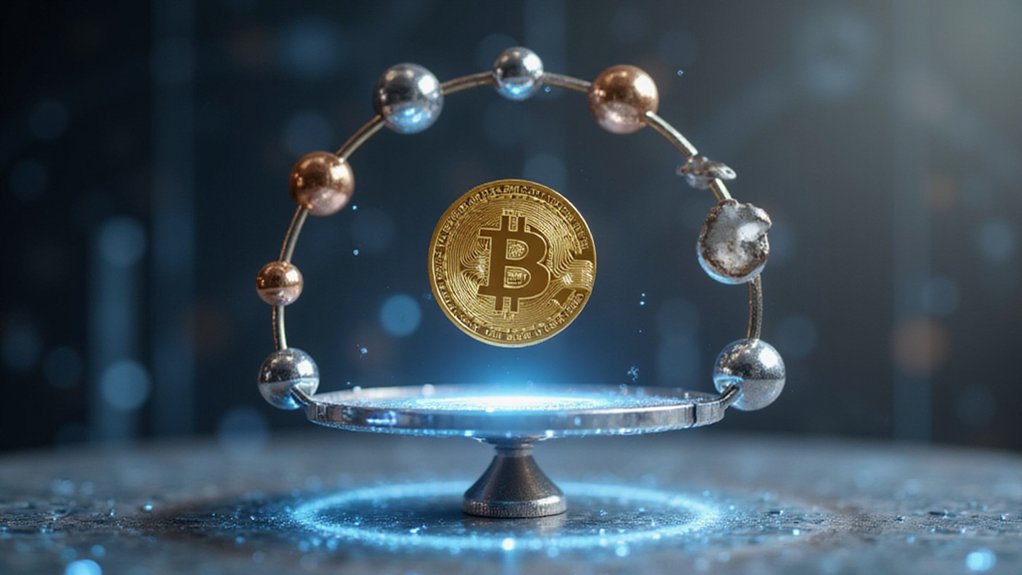
In the peculiar theater of cryptocurrency, where digital assets swing between euphoria and despair with the reliability of a caffeinated day trader, DAI emerges as something of an anomaly—a stablecoin that purports to maintain its composure without the conventional backing of actual dollars gathering dust in some bank vault.
Instead, this algorithmic creation relies on the rather audacious premise that cryptocurrency collateral, despite its notorious volatility, can somehow anchor a stable digital currency through the magic of smart contracts and over-collateralization.
The mechanism behind DAI’s stability reads like a financial engineering fever dream: users lock up their Ethereum (and other approved crypto assets) as collateral in collateralized debt positions, receiving freshly minted DAI in return.
A financial fever dream where volatile crypto assets somehow birth stable currency through algorithmic alchemy and over-collateralized wishful thinking.
The catch—because there’s always a catch—requires borrowers to deposit substantially more value than they receive, typically exceeding 150% collateralization ratios.
This over-collateralization serves as a buffer against the inevitable price fluctuations that plague cryptocurrency markets, though one might wonder about the wisdom of backing a stable asset with inherently unstable ones.
MakerDAO, the decentralized autonomous organization governing this elaborate contraption, operates without traditional corporate oversight. Instead, holders of MKR tokens vote on protocol parameters, interest rates, and acceptable collateral types—essentially crowd-sourcing monetary policy to token holders who may or may not possess relevant expertise in financial stability mechanisms.
The system’s elegance lies in its automated liquidation procedures: when collateral values drop below predetermined thresholds, smart contracts automatically sell the underlying assets to maintain DAI’s dollar peg. These self-executing programs eliminate the need for intermediaries while creating enhanced security and transparency in the liquidation process. This algorithmic approach eliminates human intervention while creating a perpetual balancing act between collateral values and outstanding DAI supply.
Since its 2017 launch, DAI has carved out substantial utility within decentralized finance protocols, serving as a reliable medium of exchange and store of value for users seeking dollar stability without traditional banking infrastructure. The protocol’s smart contracts dynamically adjust DAI’s supply in response to market changes, creating an automated mechanism that operates without human oversight. Beyond trading and lending, DAI holders can earn passive income through the DAI Savings Rate, a mechanism that provides yield without requiring minimum balance commitments or lockup periods.
The irony remains delicious: achieving monetary stability through an elaborate dance of volatile cryptocurrencies, governed by distributed decision-making, and maintained by code that never sleeps—a proof to both human ingenuity and our inexhaustible capacity for financial complexity.
Frequently Asked Questions
How Does DAI Maintain Its $1 Peg During Market Volatility?
DAI maintains its dollar peg through algorithmic precision that would impress even the most skeptical traditional banker.
When volatility strikes, the protocol adjusts lending rates to control supply—higher rates discourage minting, lower rates encourage it.
Arbitrageurs pounce on price deviations, buying undervalued DAI or selling overpriced tokens.
Meanwhile, overcollateralized vaults (requiring more crypto than DAI issued) provide the backstop, though one wonders about relying on volatile assets for stability.
What Are the Risks of Using DAI Compared to Traditional Stablecoins?
DAI’s decentralized architecture introduces distinct vulnerabilities absent in centralized alternatives like USDC or USDT.
Smart contract exploits pose existential threats, while collateral volatility can destabilize the peg despite over-collateralization buffers.
Regulatory ambiguity compounds these technical risks, as authorities struggle with decentralized governance structures.
Traditional stablecoins, ironically, benefit from centralized oversight and fiat backing—though this creates different failure modes entirely.
DAI trades regulatory clarity for algorithmic autonomy.
Can I Earn Interest by Holding or Lending DAI Tokens?
DAI holders can earn interest through both centralized and decentralized platforms, with current yields reaching 12.68% APY on certain CeFi services.
DeFi protocols offer non-custodial alternatives where smart contracts automatically distribute returns based on market dynamics.
However, CeFi platforms require surrendering token custody (introducing counterparty risk), while DeFi exposes users to smart contract vulnerabilities—though both approaches substantially outperform traditional savings accounts.
Which Cryptocurrency Exchanges Support DAI Trading and Deposits?
Major exchanges like Binance, Kraken, and Gemini support DAI trading with multiple pairs (DAI/USDT, DAI/BTC, DAI/ETH).
Regional platforms include Coincheck (Japan) and Independent Reserve (Australia/New Zealand/Singapore), which accepts fiat deposits via bank transfer.
XBTFX offers DAI as collateral for MetaTrader 5 trading—because apparently stablecoins make excellent Forex margin material.
Most facilitate direct blockchain deposits/withdrawals, though one wonders why traders need seventeen different ways to access the same dollar-pegged token.
What Happens to My DAI if Makerdao Governance Changes the Protocol?
Protocol changes affect DAI holders through adjustments to stability fees, collateral requirements, and the DAI Savings Rate—modifications that directly impact borrowing costs and yield opportunities.
Governance decisions can alter which assets back DAI, potentially changing its risk profile and market stability.
While the system’s democratic structure theoretically protects holders’ interests, one’s DAI remains subject to collective decisions that may redistribute risks, fees, and rewards across the ecosystem.
